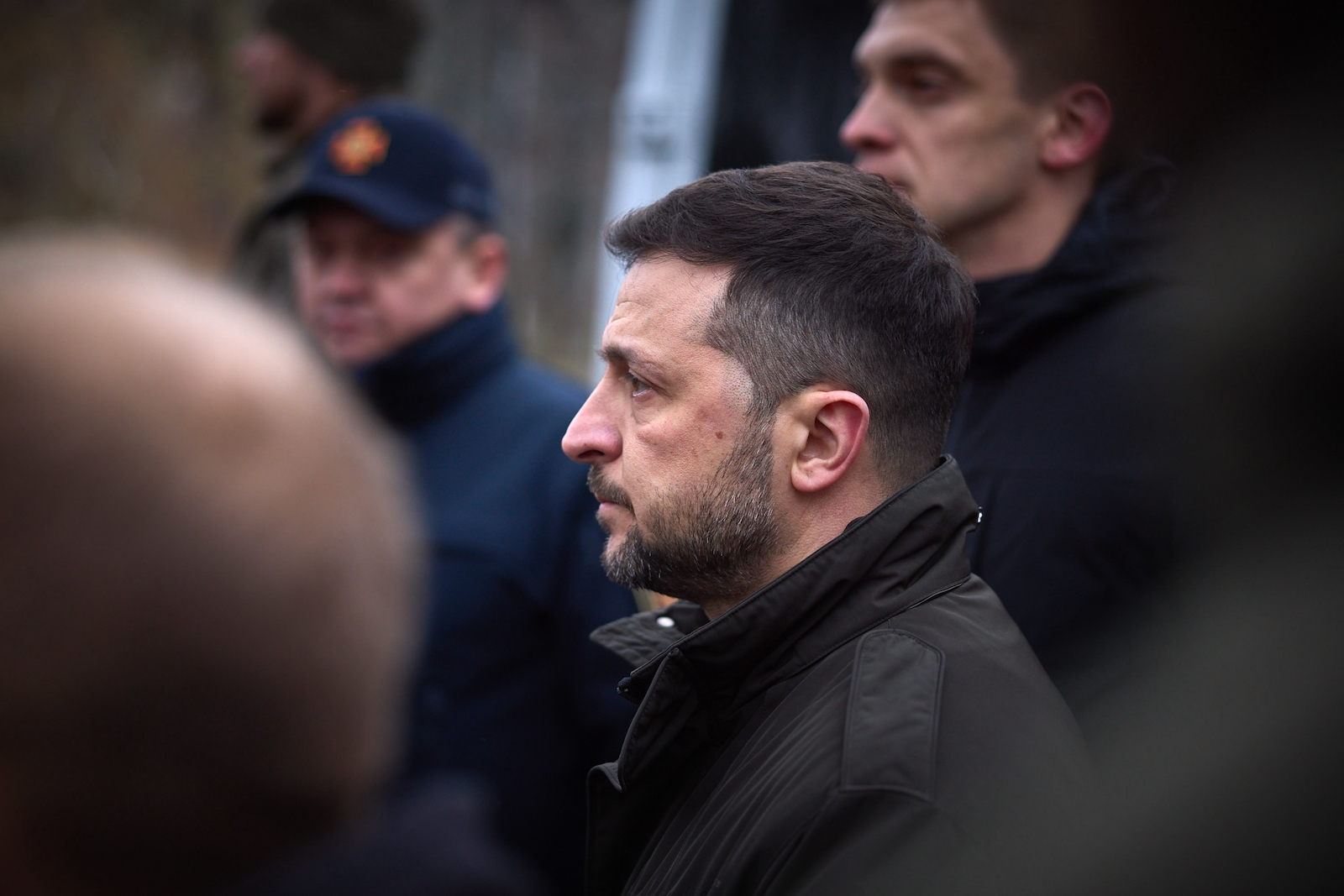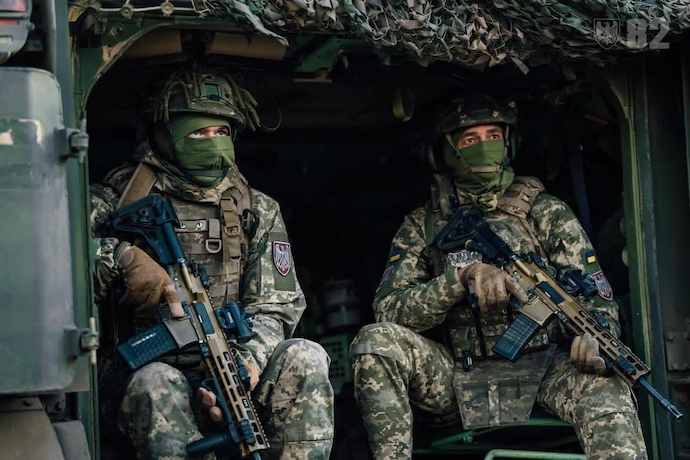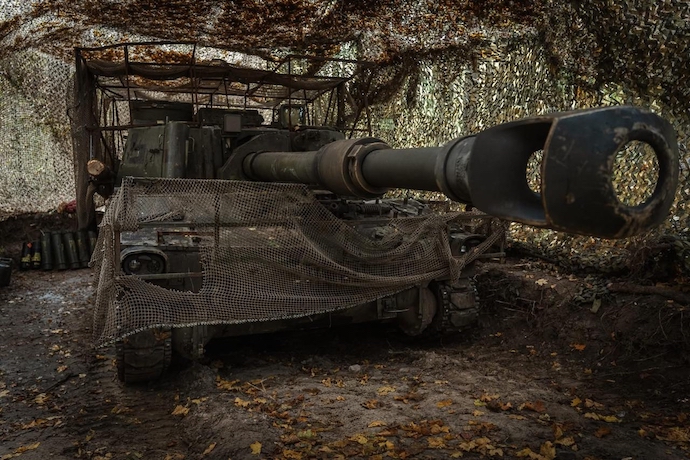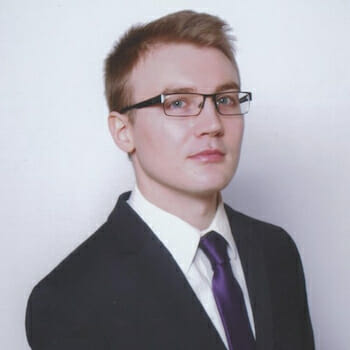
Oleg Osadtsia on Brotherhood, Drones, and Defying Russia’s War Machine
Oleg Osadtsia, a Ukrainian Army lieutenant and military IT specialist based in Ternopil, bridges the divide between battlefield urgency and modern technology. In civilian terms, he serves as a product manager across three defense projects, integrating software, sensors, and real-time feedback. Along the front lines, he has worked in electronic warfare, counter-UAS defenses, and practical autonomy, areas where innovation meets survival.
Osadtsia champions adaptive, small-unit tactics like counterattacks, ambushes, and drone reconnaissance while bluntly acknowledging persistent shortfalls in fortifications and manpower. He champions practical innovations—electric bikes and ground robots for logistics—yet insists that victory ultimately depends on human judgment and morale. Guided by Clausewitz’s philosophy, he defines success not by reclaimed territory but by denying Russia its political objectives.
In this interview, Osadtsia portrays a war transformed by drones and electronic warfare, where technology is decisive but not supreme. Human oversight remains essential as autonomy advances in targeting and logistics. The front lines have dissolved into fluid gray zones where survival depends on counter-UAS tactics, camouflage, and the agility of small units. Morale remains high yet uneven, strained by shortages of equipment and personnel. He contrasts Ukraine’s ingenuity and improvisation with Russia’s massed assaults and heavier fortifications, noting that many soldiers fill supply gaps from their own pockets—funding e-bikes, drones, and makeshift repairs.
For Osadtsia, international aid sustains civilians, but battlefield effectiveness rests on human resolve. Echoing Clausewitz once more, he argues that true victory lies not in the map’s contours, but in blocking Russia’s political ambitions.

Scott Douglas Jacobsen: Since Russia launched its full-scale invasion in February 2022, how has electronic warfare evolved?
Oleg Osadtsia: From the beginning of the full-scale invasion in 2022, electronic warfare had a limited impact at the tactical front. Since 2023, however, it has expanded dramatically, becoming a major obstacle to movement for both our forces and the enemy through jamming, spoofing, and broader electromagnetic interference.
You can no longer ignore these technologies. Recent analyses estimate that drones now account for a majority of battlefield effects, roughly 60–80% of casualties or damage, which strongly shapes how units must defend and operate under constant aerial surveillance and strikes.
At this point, electronic warfare and counter-UAS measures are major game changers. You need protection technologies to increase your forces’ survivability.
Jacobsen: How far have we advanced with semi-autonomous and autonomous drones? How much of it is currently a reality, and how much still relies on human pilots?
Osadtsia: In general, fully autonomous lethal engagement is not fielded as a standard practice; human oversight remains critical (“human-in/on-the-loop”) even as partial autonomy improves. Many startups are pursuing higher autonomy, but working, widely deployed combat models that select and engage targets without human oversight are rare today.
Some of the latest drones or missiles can lock onto a target and strike after launch, and autonomy is growing in navigation, guidance, and swarm coordination. Ground robots and other systems are increasingly handling logistics, reconnaissance, and simple tasks with greater independence—especially under heavy jamming—but lethal decisions still typically require a human.
Jacobsen: How is morale with front-line soldiers?
Osadtsia: It depends on the region, but what used to be a clearly defined front line is often now better described as a broad “gray” or “kill” zone, in which trenches, shelters, and firing positions are intermingled across a strip that can extend several kilometres, with both sides conducting persistent reconnaissance and strikes.
Morale depends on many factors—unit, specialization, and circumstances. When a unit is short on soldiers, the difference is immediately visible. I travel along the front line with my project, and I notice that where units are struggling with workforce, morale is lower.
The better-equipped units, those with stronger supplies and better prioritization, have higher morale. However, if you compare Ukrainian soldiers to civilians, the military has remarkably high morale.
That is interesting because, day to day, soldiers constantly manage emotions that civilians do not face. In the current Ukrainian army, morale is high. I do not even know how to explain it entirely, but it is truly remarkable. The morale among soldiers is stronger than that of civilians who are not directly involved.

Jacobsen: When I speak with UN officials or with people working on the ground in humanitarian and human rights operations, their concerns are tangible and immediate: rescuing abducted children, keeping schools open, and ensuring stable heating as winter deepens—especially with January approaching.
When these groups appeal for more support from the West —and I say this as someone calling from Canada, part of what they broadly mean by “the West” — their priorities are practical: generators, heating, food, and shelter.
For soldiers, however, as one of my earlier interviewees remarked, “money is not munitions.” Financial aid is appreciated, but money alone doesn’t halt an invasion. From the soldiers’ perspective, what are the most pressing needs this winter and into the next year—particularly in procurement, ammunition, and drones?
Osadtsia: That is a good question, because the feeling of support from other countries matters as much as the material aid itself. It is not only about the quantity of supplies, it is about knowing that someone stands with us.
I have many friends around the world, and when they write to me with words of encouragement, it motivates me to keep doing what I am doing. The same goes for my brothers-in-arms.
When we see news that another country is providing support —whether through drones, equipment, or ammunition —it lifts morale, even if we do not follow the news daily. Hearing that kind of support reminds us that we are not alone.
Morale depends on many factors—unit, specialization, and situation. When a unit lacks personnel, you can see it: I travel along the front line with my project, and I notice where units are struggling with workforce and where morale is lower.
The better-equipped units —those with stronger supplies and better prioritization —have higher morale. If you compare the morale of Ukrainian soldiers with that of civilians, the military’s morale is remarkably high.
Jacobsen: From the standpoint of prioritization, what do units and soldiers need most?
Osadtsia: Probably drones and reconnaissance information; those are most important for the forward line. For cities farther from the front, anti-air capabilities are also necessary. It is hard to choose between those two priorities.
Regarding ammunition, we currently have enough rounds, but higher-quality ammunition is preferable. When the weather or conditions are poor, you buy what performs better. It may seem strange—four years after the full-scale invasion, we are still buying gear ourselves. Our supply is not ideal; it is sufficient for day-to-day tasks, but if we can buy something better, drones or other equipment, we do so out of our own pockets and salaries.
That is why comparisons at the tactical level matter: when you reach the unit level, having better gear and better tactics makes a difference. For a long time, I did not speak English much, which is why we have transcripts and edits.
Jacobsen: When it comes to Russian tactics, what are they relying on most now in this gray zone, and how are you adapting to counter them? Where does Ukrainian technology hold the edge—and where, at this stage, does Russia still lead?
Osadtsia: Their main advantage is resources: they tend to mass personnel—sending large numbers to a point on the map. It’s a bit like a StarCraft swarm strategy: send waves of troops to seize positions and then gather there for defense or attack. We counter those threats primarily with artillery and UAVs, striking them on roads or at positions where we detect them forming.
When Russian troops begin to accumulate at a position, we act quickly. What we have that is better is not just tactics, it is how we think. Ukrainians are very creative. In day-to-day operations, our tactics can change ten times in a single day.
Right now, we carry out counterattacks, send drones, and set ambushes. We excel at the tactical level—executing localized operations effectively—but at the operational or strategic level, the Russians have stronger centralized management and resource coordination.

Jacobsen: Ukrainians have astonished the world with their resilience—their capacity to endure and their clear-eyed realism about the war. Yet Western coverage often overlooks the human dimension behind that resolve. From your perspective as an officer, how would you describe the sense of camaraderie among soldiers at the front? And how does that compare to what you observe on the Russian side? Reports point to higher rates of desertion and harsher disciplinary measures there—signs, perhaps, that many Russian troops lack the will to keep fighting.
Osadtsia: Starting with the Russians, we have some cultural similarities, but they express them differently. Brotherhood in Ukraine and Russia exists as cultural values, but in Ukraine, it feels more genuine and horizontal. If you have ever been to Ukraine or Russia, you know that people are generally warm and open—they will greet you, maybe even hug you right away. That spirit carries into the army.
I have already changed units since I started in the ground forces. No matter where you serve, you find very close brothers-in-arms who support you completely. They might not even know you, but when you say, “I am from this unit,” they will do everything possible to help you. It is an incredible bond—hard to describe in words. There is nothing quite like it in civilian life. Even in the most welcoming civilian environments, it is never as deep as it is in the military. I still speak with brothers I served with back in 2022, even though we are now in different units. We’re always in touch—calling to ask how things are going, where everyone is, what’s next.
As for the Russians, they have similar bonds, but those connections are more segmented by role. Infantry soldiers stay close to one another, while commanders are less integrated.
In our army, I see many situations in which a commander is part of the unit, with no clear separation. We have some bad examples where commanders distance themselves from their troops, but those are exceptions. Among Russian forces, it is more common for commanders to separate from the rank and file—for example, by eating apart from the units.
Jacobsen: If you need a moment to gather your thoughts, please take it—I know this can be emotional. Moving forward, where do you see combat logistics evolving in the near term as technology advances? Early in the war, there was a recognizable front line; now it’s more of a gray zone—or even a kill zone—shaped by drones, FPV systems, and advanced ballistics. Surveillance drones and satellite imagery have made the battlefield far more multi-dimensional. How has that changed the way you think about modern warfare?
Osadtsia: You cannot hide anything now. That means you must be much more careful. By logistics, I mean the whole complex: shelters, bunkers, transport, supply chains. We have to build stronger protective positions—even move sections of the front underground. We are not as strong at that as the Russians. We have captured some of their positions and observed that they are better at construction and fortification—more effective in building defensive works and field structures.
Construction—defensive-line construction. The Russians have a better defensive line. Ours are worse, and I do not know exactly what should change. At the tactical level, we are trying to improve them ourselves. From what I know, Russia is allocating engineers from the civilian side to build fortifications, which is a big reason their defensive positions are stronger than ours.
Logistics—supplies and lines of communication—have changed significantly due to UAVs of various types, including air- and ground-based systems. They are not a silver bullet, because tactics are changing.
You no longer need to hold static observation positions; now you need to cut enemy logistics to be more effective in defense. You also do not need to concentrate large numbers of soldiers near the front; many attacking units operate farther from the front line and can be resupplied more easily.
Early in the war, in the summer of 2022, drones were already used to deliver water and ammunition. Ground robotic platforms can carry more weight and therefore more supplies, but they are not a complete solution: logistics routes remain vulnerable to artillery, FPV drones, and strike aircraft. For that reason, convoys try to move at night or during quieter hours, and commanders invent new operational tactics.
Some command units envision a significant impact from ground logistics drones, but I have not seen that materialize on the front line yet; the effect so far has been limited.
When I was on the front line, I often moved alone to reduce the chance of becoming a high-priority target. If two or three people move together with gear, the enemy usually opens fire. So we lower the target priority. Some of us use electric bikes—they are great for covering long distances quickly and quietly, allowing a single person to move without drawing much attention or fire.

Jacobsen: What kind of jokes do ordinary soldiers tell these days? And beyond that, what are some of the biggest misconceptions analysts or civilians hold about soldiers’ lives—both in Ukraine and in the West? What do people most often get wrong, and what does the reality on the ground actually look like?
Osadtsia: There is a common joke in the army: “Whoever has served in the army does not laugh at the circus.” It is true—after what you experience, tiny surprises you.
The misunderstandings often come from people—both Ukrainians far from the front and foreigners—who comment on soldiers’ lives without understanding what it is like. Analysts may imagine constant fighting, but much of war is patience, exhaustion, logistics, and survival. Life at the front is made up of small moments—sharing food, fixing equipment, staying warm—between the chaos. Those details are invisible to most outsiders, but they are the real substance of what keeps soldiers going.
What they get right, what they get wrong, and what they miss entirely. Let us start with what they miss entirely—that is the most interesting. Many people think the army is somehow tied directly to global political decisions or world leaders’ agendas. That is a complete misunderstanding.
Ukrainians are very individualistic people, and that independence carries into the army. It functions with a degree of autonomy in its mentality and direction. Of course, if the President, our Commander-in-Chief, gives an order, we follow it.
However, if, for example, world leaders make an agreement that contradicts the army’s sense of defense or national integrity, there is a possibility that parts of the military might ignore it. That is not rebellion—it is the Ukrainian character: fiercely independent, skeptical of authority, and loyal to the idea of defending our people above all else.
Now, as for what people get wrong, when I travel to cities far from the front line, I see that many Ukrainians act as if there is no war at all. They may think about it abstractly, but their daily behavior shows detachment. Ukraine is a large country, and in the western regions, there is no fighting, so people live as though the war is somewhere else, not part of their reality.
That is a significant failure of communication on the part of the government and the media. They have tried to keep citizens in what I would call a “warm bath”—a comfortable illusion that shields them from the harsh truth. Many Ukrainians have left the country in search of a better life, but those who remain are often disconnected from the sense of collective responsibility.
Roughly a quarter of Ukrainians have a family member serving in the military—brothers, sisters, or relatives. However, the other three quarters do not feel that connection. They see the army as a group of professionals doing a job for money, rather than as a shared national effort for survival.
I do not know why people treat military service like police or fire departments; they assume soldiers choose it as a profession. That is partially true, but my brothers-in-arms and I do this for our country, our families, and for people who do not even think about the war. We are citizens defending our country, not performing a public service. It is sad to see civilians separate themselves from that reality. This is my first war, so I do not know how it usually happens.
Another misunderstanding is that everything depends on external support. Economically, if that support shrinks, there could be a collapse. However, a reduction in military supply would likely cause more civilian casualties than military ones.
We have secured many key positions and knowledge; the army can continue to defend as it has since 2022. More ammunition and equipment increase survivability, but the critical factor is human resources.
Many units are understrength—if you need 100 percent personnel, you might only have half. Even with a reduced workforce or equipment, units can remain effective in their current operational areas. People think we are entirely dependent on outside supplies; the reality is that tactical skill and survivability depend on the soldiers who are there, not on politicians.
Jacobsen: This might be a good note to end on—and thank you again for taking the time. Every culture has its own sharp, memorable phrases of wisdom, like “all that glitters is not gold.” What’s a Ukrainian saying or metaphor that, in your view, best captures the spirit or essence of this war?
Osadtsia: That is an interesting question. Let me think, I would put it in military terms. One of the generals—Carl von Clausewitz—said that victory in war is not about capturing territory; it is about achieving your political goals. I think that fits this war perfectly.
Ukraine may lose some territory, but we keep preventing the enemy from realizing their political aims. That is the greatest lesson of this war: you can lose land, but if your enemy fails to fulfill their political goals, they lose the war. That could be the Ukrainian wisdom for this conflict.
When you are living day to day in the army, you rarely have time to reflect. However, sometimes, when you finally pause—maybe in a bunker or somewhere quiet—thoughts come to you that feel deeply philosophical. Some of them even surprise you.
Jacobsen: War makes poets.
Osadtsia: Yes, poets and philosophers.
Jacobsen: The ones who survive, yes. One of the great humanist philosophers—he witnessed the Dresden bombings in World War II—uttered wisdom, wrapped in a delicate cloak of darkness and tinged with optimism.
Osadtsia: He believed you can’t see the light of life without acknowledging its shadows.
Jacobsen: That is true.
Osadtsia: You have to see both sides—the good and the bad that happen to your friends, your brothers, to everyone around you. Only then can you understand how precious life really is.
Jacobsen: A fitting note to end on—the war, the poets, and the philosophers. It was very nice to meet you, Oleg.
Osadtsia: Thank you, Scott.
